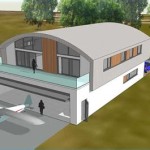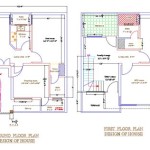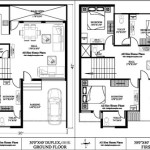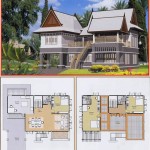Sustainable House Design Plans: Essential Considerations for Eco-Friendly Living
In today's environmentally conscious world, sustainable house design plans are gaining traction as homeowners seek to reduce their environmental impact while creating comfortable and healthy living spaces. These plans incorporate a range of strategies to minimize energy consumption, conserve water, and promote the use of sustainable materials. Here are some essential aspects to consider when creating sustainable house design plans:
1. Energy Efficiency:
Designing a house for energy efficiency is crucial for reducing its carbon footprint. This can be achieved through:
- Proper insulation to minimize heat loss and gain.
- High-performance windows with low emissivity (Low-E) glazing.
- Energy-efficient appliances and lighting.
- Integration of renewable energy sources such as solar panels or geothermal systems.
2. Water Conservation:
Water conservation is essential in sustainable house design. Consider:
- Low-flow plumbing fixtures, such as faucets and toilets.
- Rainwater harvesting systems for non-potable uses.
- Drought-tolerant landscaping to reduce outdoor water consumption.
- Efficient irrigation systems.
3. Sustainable Materials:
Incorporating sustainable materials into the construction of your home can significantly reduce its environmental impact. Opt for:
- Recycled and reusable materials.
- Locally sourced materials to minimize transportation emissions.
- Natural materials such as wood, stone, and bamboo.
- Materials with low embodied energy, which refers to the energy used in their extraction and production.
4. Indoor Air Quality:
Ensuring good indoor air quality is vital for the health and well-being of occupants. Consider:
- Proper ventilation systems to provide fresh air and remove pollutants.
- Low-emitting materials for flooring, paints, and adhesives.
- Natural ventilation through windows and doors.
- Air purification systems to remove harmful pollutants.
5. Site Orientation:
The orientation of your house on the building site can significantly impact its energy efficiency. Consider:
- Positioning the house to maximize natural daylighting.
- Locating windows to capture prevailing breezes for natural ventilation.
- Shading south-facing windows to avoid excessive heat gain.
- Using trees or vegetation to provide natural shading.
6. Climate Considerations:
Designing a house that is appropriate for its climate is essential for sustainability. Consider:
- Insulation levels to suit the local climate.
- Appropriate roof design and materials for the local weather conditions.
- Passive solar design to take advantage of natural solar heat gain.
- Water management systems to mitigate flooding or drought.
7. Life-Cycle Assessment:
Consider the entire life cycle of your house, from construction to demolition, to ensure true sustainability. This includes:
- Assessing the environmental impact of materials and construction methods.
- Designing for adaptability and flexibility to extend the house's useful life.
- Planning for end-of-life disposal and recycling.
By incorporating these essential aspects into your sustainable house design plans, you can create a home that is not only comfortable and beautiful but also environmentally friendly and energy-efficient. Embrace sustainable design principles and make a positive impact on the planet while enjoying the benefits of a healthy and eco-conscious living space.

Gallery Of Eco Sustainable House Djuric Tardio Architectes 52

Pin On Architectural Presentations Drawings Models Concepts

Sustainable Living House Plan 33035zrx Architectural Designs Plans

Aus Guide Environmentally Sustainable Homes Cfm Air

Floor Plan For Sustainable Home Bui Gallery 7 Trends

Simply Smart An Ultra Green Sustainable House By Zeroenergy Design
This Entirely Customizable Dwelling Unit Raises The Bar In Energy Efficient Green Home Market Place Plans By Leap Adaptive

Your House Plans An Explanation Thompson Sustainable Homes

25 Small Sustainable House Plans Cutaway Drawings Natural Building Blog

Cape Plans 1 Arei Designs








